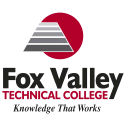What do they do?
Set up, operate, or tend more than one type of cutting or forming machine tool or robot.
Also known as:
Cell Technician, CNC Machine Setter (Computer Numerically Controlled Machine Setter), Fabrication Set-Up Person, Injection Molding Technician, Machine Operator, Machine Technician, Mold Setter, Production Operator, Shear Operator, Tooling Set-Up Person
-
1.1%
Change
Ranks #33 in job growth rate1,950Job Openings
Ranks #1 in net job growth
Colleges with the most graduates that become Multiple Machine Tool Setters, Operators, and Tenders, Metal and Plastic
Looking for colleges that offer a specific major? Use the College Match Tool to find your best-matched schools and discover your estimated Net Price!
- High school diploma equivalent (48%)
- Some college, no degree (21%)
- Less than high school diploma (18%)
- Associate's degree (7%)
- Bachelor's degree (5%)
- Master's degree (1%)
- Doctorate or Professional Degree (<1%)
People in this career often know a lot about:
- Production and Processing - Knowledge of raw materials, production processes, quality control, costs, and other techniques for maximizing the effective manufacture and distribution of goods.
- Mechanical - Knowledge of machines and tools, including their designs, uses, repair, and maintenance.
- Mathematics - Knowledge of arithmetic, algebra, geometry, calculus, statistics, and their applications.
People in this career often have talent in:
- Arm-Hand Steadiness - The ability to keep your hand and arm steady while moving your arm or while holding your arm and hand in one position.
- Control Precision - The ability to quickly and repeatedly adjust the controls of a machine or a vehicle to exact positions.
- Near Vision - The ability to see details at close range (within a few feet of the observer).
- Manual Dexterity - The ability to quickly move your hand, your hand together with your arm, or your two hands to grasp, manipulate, or assemble objects.
- Problem Sensitivity - The ability to tell when something is wrong or is likely to go wrong. It does not involve solving the problem, only recognizing that there is a problem.
- Visualization - The ability to imagine how something will look after it is moved around or when its parts are moved or rearranged.
People in this career often do these activities:
- Measure dimensions of completed products or workpieces to verify conformance to specifications.
- Mount materials or workpieces onto production equipment.
- Read work orders or other instructions to determine product specifications or materials requirements.
- Review blueprints or other instructions to determine operational methods or sequences.
- Select production equipment according to product specifications.
- Mount attachments or tools onto production equipment.
- Set equipment controls to meet cutting specifications.
- Watch operating equipment to detect malfunctions.
- Operate grinding equipment.
- Operate cutting equipment.
- Measure materials to mark reference points, cutting lines, or other indicators.
- Replace worn equipment components.
- Set equipment guides, stops, spacers, or other fixtures.
- Select production input materials.
- Operate metal or plastic forming equipment.
- Smooth metal surfaces or edges.
- Clean production equipment.
- Maintain production or processing equipment.
- Lubricate production equipment.
- Repair production equipment or tools.
- Notify others of equipment repair or maintenance needs.
- Calculate dimensions of workpieces, products, or equipment.
- Adjust equipment controls to regulate flow of production materials or products.
- Adjust equipment controls to regulate coolant flow.
- Adjust equipment controls to regulate flow of water, cleaning solutions, or other liquids.
- Instruct workers to use equipment or perform technical procedures.
- Program equipment to perform production tasks.
- Write computer programming code.
- Record operational or production data.
- Align parts or workpieces to ensure proper assembly.
- Clear equipment jams.
This page includes data from:

 Occupation statistics: USDOL U.S. Bureau of Labor Statistics Occupational Employment Statistics
Occupation statistics: USDOL U.S. Bureau of Labor Statistics Occupational Employment Statistics


















